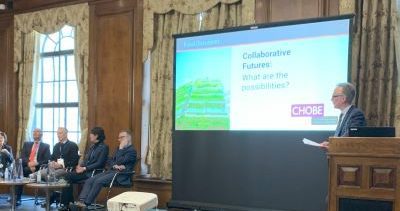CEM announced as UKGBC training partner for STEP programme
Posted on: 15 January, 2010
The UK Green Building Council today announced its partners for delivery of the first two of its STEP (Sustainability Training and Education Programme) offerings, which will launch in 2010. This follows last year’s analysis, which showed great demand from those within the construction and property sector for UK-GBC to become involved in the provision of sustainability training and education.
Firstly, the College of Estate Management has been chosen from a field of 45 applicant organisations, to deliver an introductory course to sustainable development and the built environment. Aimed at professionals in the industry, this course will roll out in spring 2010 and could accommodate up to 12,500 people in its first year. Course participants will be able to choose between online and face to face delivery options of the same course, with a minimum seven hours learning.
Secondly, the University of Cambridge Programme for Sustainability Leadership (CPSL) and WSP have been chosen from a field of 30 applicant organisations, to deliver a sustainability leadership programme for board and senior level leaders in the built environment. Aimed at those in positions of the greatest influence, around 90 places will be available on this course in the first year, which is also scheduled to roll out in the spring. This course will be residential, is likely to be held over two days, and will be open to leaders from across the construction and property sector. It could also be adapted for individual organisations to support their efforts for transformational change.
Chad Harrell, Head of Business Development at the UK Green Building Council, said:
‘The construction and property sector must be at the forefront of a low-carbon, sustainable economy. However, we need the skills, knowledge and expertise to match the scale of this challenge.
‘We’re delighted to bring on board these like-minded delivery partners for the roll out of STEP. Our research has shown great demand for UK-GBC involvement in sustainability training and education and these first two offerings will help those in our sector not only to address the challenge of sustainability, but also to unearth the huge market opportunities.’
Stephen Bickell, CEM’s head of sustainability, said:
‘CEM is delighted to have the opportunity to work with UK-GBC on STEP. Joining forces like this forms a strong partnership between the two organisations, to drive change in the industry through sustainability education. STEP will help the UK develop sustainable built environment skills for a wide ranging audience, which is essential not only for us to achieve our carbon reduction targets but also to be competitive in the global green economy.’
Mike Peirce, Deputy Director of CPSL, said:
‘We are privileged to collaborate with UK-GBC and WSP in delivering this ground-breaking and timely initiative. Our work with leaders regularly shows the value of building people’s awareness of the most significant sustainability challenges faced by their teams and organisations, and equipping them to respond to these issues. But equally important is the emergence of a community of leaders who possess a common language, capacity and determination to work together for change. The STEP programme provides an excellent opportunity to create such a movement in the built environment sector.’
Peter Sharratt, Global Director of Energy + Sustainability Services at WSP, said:
‘We are very excited about making a real difference here and wholeheartedly share the ambitious vision that UK-GBC has set for the STEP programme. We put together a team that combined our experience of delivering real world solutions to the built environment all the way from smart regulation and corporate strategy, to sustainable masterplanning and design. Together with CPSL’s globally acknowledged academic and leadership training excellence, we look forward to playing a valuable part in helping UK-GBC deliver its objective to radically transform the sustainability of the built environment.’





